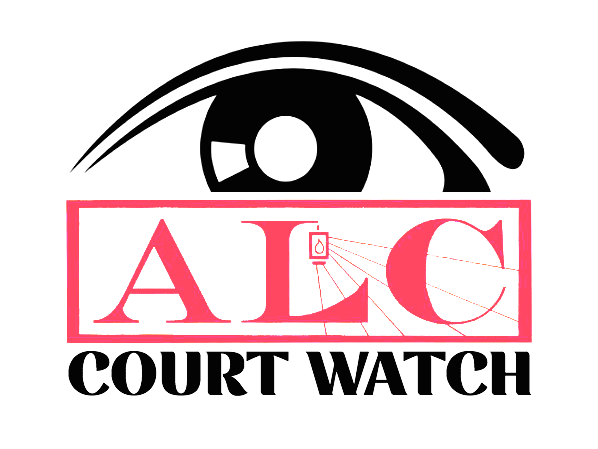by Ines Borges and Maple Maloney
I N E S
Before joining the ALC Court Watch program, I was naive; I believed that courtrooms weren’t meant to be observed by anyone other than judicial officials. The legal system is devoted to upholding “principles of justice” – or so it is publicly perceived. Why would individuals who hold these influential positions need to be monitored? The judicial system has this superior and confidential impression on society, allowing its activities and developments to go about undisclosed from the public. Immediately after becoming involved with Court Watch, it was clear to me that not only is it critical for our communities that local courtrooms be observed – but more so, it is our fundamental First Amendment right to observe them.
Before the Allegheny County court closures due to COVID-19, I attended my first in-person arraignments with my fellow court watcher, Maple. Inside an appearance or hearing, you quickly realize that there are not many individuals present during these cases. Those who are present are typically judicial officials, the defense and prosecution, and family members from both sides. Court watchers can act as unbiased observers to these cases. Maple is our first and most knowledgeable in-person court watcher and reflects on her time in the courts before the pandemic
M A P L E
I started going to the Allegheny County Criminal Courthouse in January of this year. The goal was to take notes on the demographics and ambiance of the courtrooms. After a few visits, I found that responses from the judges, clerks, and attorneys were skewed. Some were open to our presence and observation, while others expressed how uncomfortable they were.
Most of my time observing the players of the courtroom was spent looking at how individuals were being treated by members of the authority. I was able to sit in on a homicide trial where the room watched a video of the defendant meeting with his relative while incarcerated. Everyone in the courtroom watched the screen for 45 minutes with no sound. The family of the victim was present, and the attorneys, as well as police officers, treated them with respect and sympathy. The officers didn’t have much interaction with us, besides warning graphic images to be played on the screen. I walked away that day with no notes of disappointment or distress from the players of the courtroom, which is what we were told to look for as our focus.
While most observations came and went with nothing too notable, there were a few I found unacceptable. I had a chance to sit in on a few sentence hearings in Tranquili’s courtroom. This was one of my first experiences in a courtroom, and it was negative. I did not feel comfortable, nor did I feel like everyone in the room was being respected. I had no interaction with anyone except the clerk, who just seemed annoyed at our presence.
The goal of our in-person court watch for the first months was to hold the players accountable for how they treat others in the courtroom. We were able to achieve that by sitting in the ‘audience’ – as members of society who are invested in seeing equivalent justice served with respect and acknowledgment.
During the months Pennsylvania and the rest of the country were on lockdown, court proceedings continued through virtual and telecommunications. Many states and cities allowed for the public to gain access to the courts through live YouTube feeds or streaming via Microsoft Teams. Allegheny County did not provide any means for the public to practice their first amendment right to attend and access hearings. After many unreturned voicemails from judges chambers and several letters left unresponded, weeks had gone by without any insight to the ongoings of the courtrooms.
After the initial stages of the COVID-19 quarantine, we decided it was time to get back into the courtrooms with in-person eyes. The first time the administration let us back in, we weren’t actually able to see any hearings, arraignments, or trials. When walking into the courtroom, the clerk asked us what case we were here for. We stated we were just here to observe, and the clerk then said (appearing pretty annoyed) that they might not have space for us. We said we would leave if more than 25 people came into the room (25 was the maximum to adhere to social distancing regulations). After a few minutes, defendants and their attorneys continued to file in, so we had to leave. We then found another room where we could observe a meeting between multiple attorneys and a judge discussing when a case would be ready to go to a jury trial. The judge stated it would most likely take until next year to get people in for a jury. The following week the court shut down once again, and we were not allowed in.
Our community has been completely deprived of our constitutional access since March. With no virtual admittance available, one month turned to two, and two turned to three. Later in June, when courts were briefly open, there was no room for the public – contrary to what was promised. As we enter August and the summer comes to a rapid close, when will transparency of our local judicial systems become available? Will we be forced to speculate and predict the clandestine undertakings of the Allegheny County criminal courts?
WHO WILL KEEP COURTS ACCOUNT

